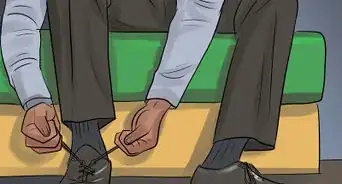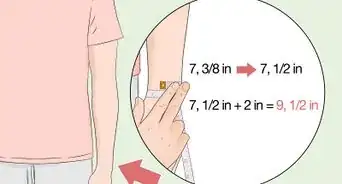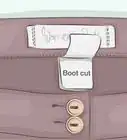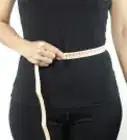This article was co-authored by Korri Burton-Universe. Korri Burton-Universe is a Professional Tailor and the Owner of Uncommon Closet, a custom clothing and tailor resource for the LGBTQIA+ community and those with body types often overlooked by major clothing chains and shops. Korri specializes in custom clothing, tailoring services, and wedding clothes for people of all identities, genders, races, and sizes. Uncommon Closet creates a safe space for people to find or make outfits that make them feel safe and powerful.
This article has been viewed 159,669 times.
Clothing comes in standard sizes, but these sizes vary from company to company. While you can always try the shirt on in a brick-and-mortar store, this is not possible when ordering online. Knowing how to measure your shirt size is important, and it can help ensure that you order your shirt in the size. It can also help you if you ever choose to order a custom-sized shirt or ask a tailor to alter one for you.
Steps
Taking Basic Measurements
-
1Keep your body relaxed while taking your measurements. Do not puff out your chest, suck in your belly, or flex your muscles. If you do any of these, the measurements will not be accurate and the shirt will not fit. The measuring tape needs to be loose enough to slide around easily.[1]
- Consider having someone take your measurements for you. This will ensure that your body is straight while you are taking them.[2]
-
2Measure around the widest part of your chest. Wrap a measuring tape around the widest part of your chest. Keep your body relaxed and do not puff your chest out.[3]Advertisement
-
3Measure the narrowest part of your waist. Once again, keep your body relaxed and do not suck your gut in. Wrap the measuring tape around your waist; keep it loose enough so that you can still breathe.[4]
-
4Measure the largest part of your hips. This is required for most women's shirts, although some men's shirts may also require this measurement. Simply wrap the measuring tape around the fullest part of your waist, including the buttocks.[5]
-
5Take additional measurements for the collar and sleeve, if needed. If you are buying a man's dress shirt, you may need to take additional measurements for the collar and sleeve. This all depends on the store that you are buying from, as some brands have custom neck sizes and sleeve lengths.[6]
- Collar: Wrap the measuring tape around the base of your neck. Keep it loose enough so that you can slide 2 fingers under it.[7]
- Sleeve (casual): Measure from your shoulder down to your wrist, or wherever you want the cuff to be.
- Sleeve (dress or formal); Measure from the back-center of your neck, over your shoulder, and down to wherever you want the cuff to end.
-
6Bring your measurements with you when you buy your shirt. Find the measuring chart provided by the company you are shopping at, and compare your measurements to theirs. Read the size that your measurements correlate to, then buy a shirt in that size. Keep in mind that different companies use different sizing charts, so your size may change depending on where you go. You could be a size "medium" at one company, and a size "large" at another.
Measuring a Dress Shirt
-
1Find a dress shirt that fits you well. One of the best ways to measure for a dress shirt is to use one that you already own and that fits you the way you want the new shirt to fit you. Go through your closet, find a dress shirt, and try it on to ensure that it still fits you well. Take it off once you are done.[8]
- This method assumes that you will be measuring a button up men's dress shirt. It may work for other styles of shirts too.
-
2Close all of the buttons spread the shirt out on a flat surface. Find a flat surface, such as a table or hardwood floor. Spread the shirt out on that surface, then smooth out any wrinkles. Make sure that all of the buttons on the shirt are closed, including the collar and cuffs.
-
3Measure just below the armpits for the chest size. Find the seams where the sleeves attach to the shirt. Place a measuring tape across the shirt just below these seams. Make sure that the end is aligned with the left side seam, then measure across to the right side seam. Write your measurement down.[9]
-
4Take the waist measurement across the narrowest part of the torso. Even men's shirts taper towards the middle of the torso. Find the spot on your shirt where your waist would be, then measure across it, from the left side seam to the right side seam.[10]
- This can be a little hard to find on men's shirts; it is more evident on women's shirts and fitted shirts.
-
5Pull the tape across the bottom hem for the hips. Find the bottom-left corner of the shirt, and measure across to the bottom-right corner. Make sure that you measure from seam-to-seam. Do not measure around the curved hem; measure straight across it.[11]
- Some places refer to this as the "seat" measurement instead.[12]
-
6Take the length measurement in the back, from collar to hem. Flip the shirt over and smooth out any wrinkles. Place the measuring tape at the bottom edge of the collar, right where it connects to the shirt. Pull the measuring tape straight down towards the bottom edge of the hem, and record your measurement.[13]
- If your shirt has a curved bottom hem, pull the tape down to the curved hem.
- Keep the measuring tape as straight as possible. If your shirt has a striped or checkered pattern, use the lines as a guide.
-
7Take the shoulder width measurement in the back, right across the yoke. Keep the shirt spread out with the back facing you. Place the measuring tape at the left shoulder seam. Pull the tape across the yoke towards the right shoulder seam, and record your measurement.[14]
- The shoulder seam is the area where the sleeve connects to the body of the shirt.
- Some places refer to this as the "yoke" measurement instead.[15]
-
8Measure from shoulder seam to cuff for the sleeve measurement. Place the end of the measuring tape at the shoulder seam where the sleeve starts. Pull the tape towards the bottom edge of the cuff and take your measurement.[16]
- Some places will require you to start the measurement at the back-center of the collar instead.[17]
-
9Spread the collar and cuff flat before taking their circumference. Open up the collar, and spread it flat. Place the measuring tape against the stitch holding the button to the fabric. Pull the tape across the collar towards the buttonhole. Record the measurement at the center of the button hole. Repeat this step for the cuff.[18]
-
10Record anything else that the tailor or seamstress requests. The above measurements are the most common and basic measurements. Some tailors and seamstresses may require additional measurements, such as the bicep, elbow, and forearm. Listen or read their instructions, then measure your shirt accordingly.[21]
-
11Take your measurements with you when you go shopping. Most places will have a sizing chart. Compare your measurements to the ones on the chart to find out what size you are, then buy a shirt in that size. Keep in mind that different companies may use different sizing charts; you could be a "medium" at one store, and a "large" at another.
Community Q&A
-
QuestionI have a 18" neck and I need to know what shirt to order?
 PinkskatesTop AnswererYour chest and waist measurements are much more important to your size. Take those and then look up the sizing chart for wherever you plan to buy from.
PinkskatesTop AnswererYour chest and waist measurements are much more important to your size. Take those and then look up the sizing chart for wherever you plan to buy from. -
QuestionHow do you take shirt measurements?
 Drew Hawkins1Community AnswerTaking basic measurements isn't too difficult and it can help you choose a shirt that fits you perfectly. Stand up and get yourself a tape measure. Wrap the measuring tape around the widest part of your chest. Keep your body relaxed and don't puff your chest out. Then, measure the narrowest part of your waist. Some shirts, especially women's shirts, need hip measurements so it fits well over your form. Simply wrap the measuring tape around the fullest part of your waist, including the buttocks. If you are buying a man's dress shirt, you may need to take additional measurements for the collar and sleeve. Once you've got your measurements, use them to help choose a shirt that fits you well.
Drew Hawkins1Community AnswerTaking basic measurements isn't too difficult and it can help you choose a shirt that fits you perfectly. Stand up and get yourself a tape measure. Wrap the measuring tape around the widest part of your chest. Keep your body relaxed and don't puff your chest out. Then, measure the narrowest part of your waist. Some shirts, especially women's shirts, need hip measurements so it fits well over your form. Simply wrap the measuring tape around the fullest part of your waist, including the buttocks. If you are buying a man's dress shirt, you may need to take additional measurements for the collar and sleeve. Once you've got your measurements, use them to help choose a shirt that fits you well. -
QuestionWhat are the measurements on dress shirts?
 Drew Hawkins1Community AnswerMost dress shirts have 2 measurements that are necessary for a solid fit. You need your neck size and your sleeve length. However, there are additional measurements you can take to have a shirt that's tailor-made for you. By measuring your chest and back length you can choose a shirt that doesn't look baggy or over-sized on you. Measure the largest part of your hips to choose a shirt that tapers and conforms to your body. Make sure you relax and don't puff out your chest or flex your muscles when you get your measurements so they're accurate.
Drew Hawkins1Community AnswerMost dress shirts have 2 measurements that are necessary for a solid fit. You need your neck size and your sleeve length. However, there are additional measurements you can take to have a shirt that's tailor-made for you. By measuring your chest and back length you can choose a shirt that doesn't look baggy or over-sized on you. Measure the largest part of your hips to choose a shirt that tapers and conforms to your body. Make sure you relax and don't puff out your chest or flex your muscles when you get your measurements so they're accurate.
Things You'll Need
- Measuring tape
- Helper (recommended)
- Shirt that fits you (if measuring for a shirt)
References
- ↑ https://www.moderntailor.com/static/mt/men_shirt_measureguide.pdf
- ↑ Korri Burton-Universe. Professional Tailor. Expert Interview. 12 January 2021.
- ↑ https://www.thomaspink.com/content/howtomeasure
- ↑ https://www.thomaspink.com/content/howtomeasure
- ↑ https://www.thomaspink.com/content/howtomeasure
- ↑ https://shop.nordstrom.com/c/mens-dress-shirts-fit-guide
- ↑ Korri Burton-Universe. Professional Tailor. Expert Interview. 12 January 2021.
- ↑ https://www.moderntailor.com/static/mt/men_shirt_measureguide.pdf
- ↑ https://www.ratioclothing.com/help/measure-a-shirt
- ↑ https://www.ratioclothing.com/help/measure-a-shirt
- ↑ https://www.moderntailor.com/static/mt/men_shirt_measureguide.pdf
- ↑ https://www.ratioclothing.com/help/measure-a-shirt
- ↑ https://www.ratioclothing.com/help/measure-a-shirt
- ↑ https://www.ratioclothing.com/help/measure-a-shirt
- ↑ https://www.moderntailor.com/static/mt/men_shirt_measureguide.pdf
- ↑ https://www.moderntailor.com/static/mt/men_shirt_measureguide.pdf
- ↑ https://www.ratioclothing.com/help/measure-a-shirt
- ↑ https://www.moderntailor.com/static/mt/men_shirt_measureguide.pdf
- ↑ https://www.ratioclothing.com/help/measure-a-shirt
- ↑ https://www.moderntailor.com/static/mt/men_shirt_measureguide.pdf
- ↑ https://www.ratioclothing.com/help/measure-a-shirt
About This Article
To measure your shirt size, all you'll need is some fabric measuring tape. First, wrap the tape around the widest part of your chest. Keep your body relaxed and avoid puffing out your chest, since this will affect your measurements. Next, wrap the tape around the narrowest part of your waist and write down your measurement. Avoid sucking in your stomach and keep the tape loose enough so that you can breathe normally. After that, record the measurement of the largest part of your hips. Most women’s shirts and some men’s shirts use this measurement. If you’re buying a men’s dress shirt, you should also measure around the base of your neck and your sleeve from the back-center of your neck to your wrist. For more tips, including how to measure the length of a dress shirt, read on!


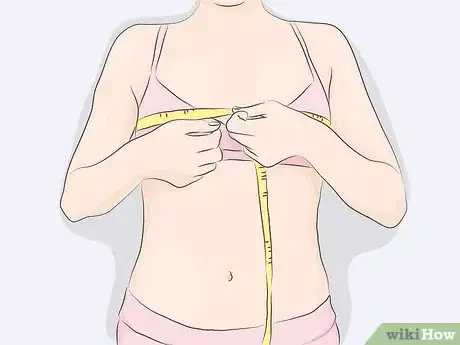

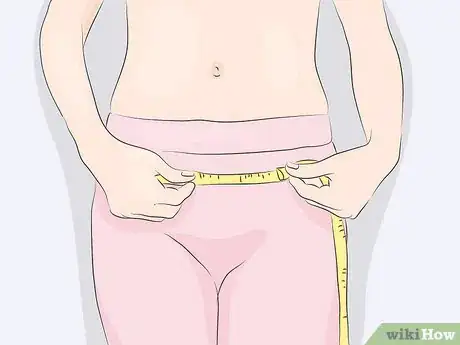
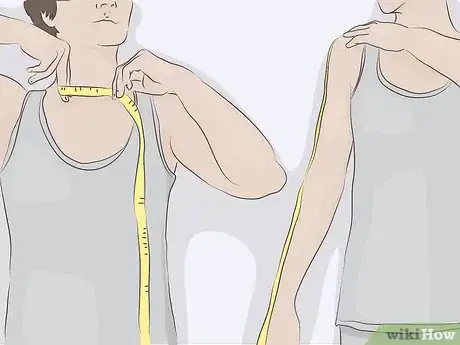
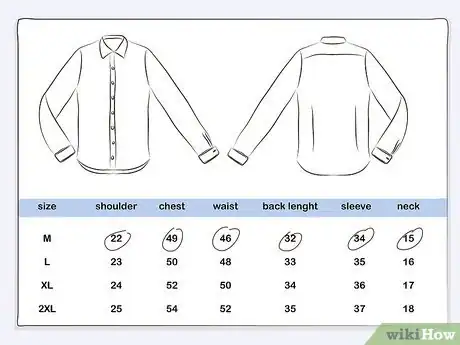
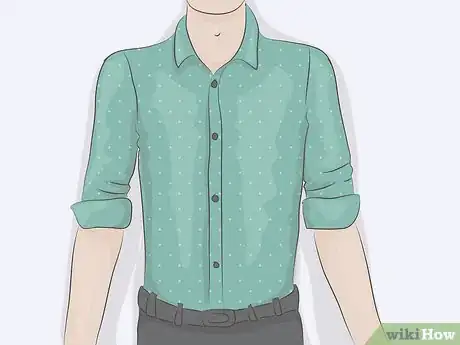


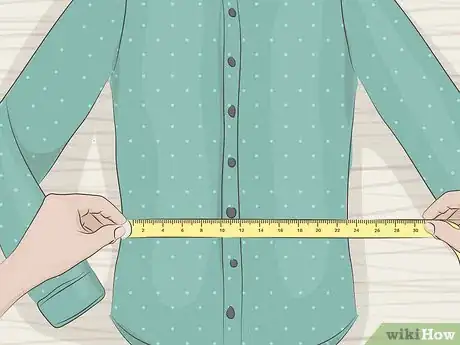

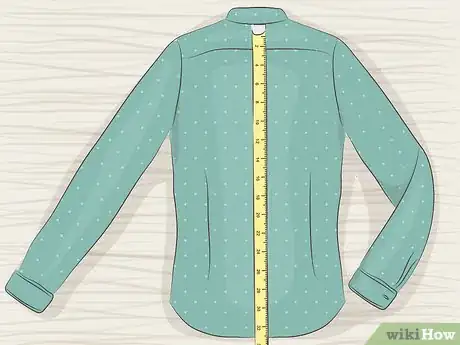
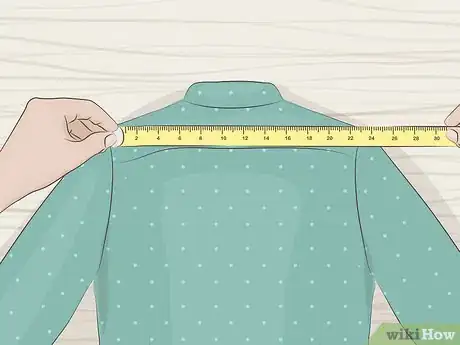
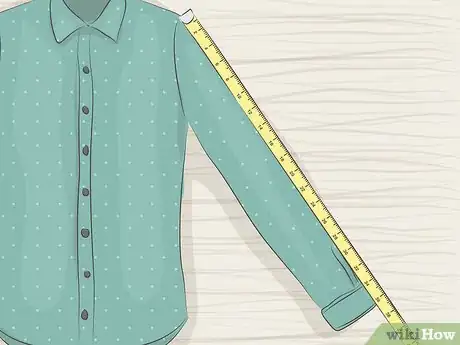


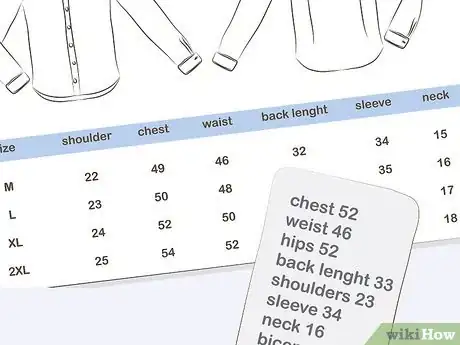
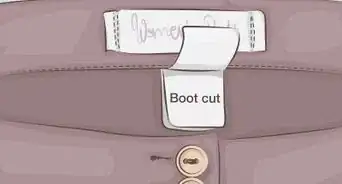
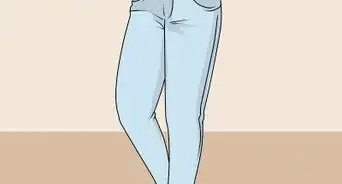
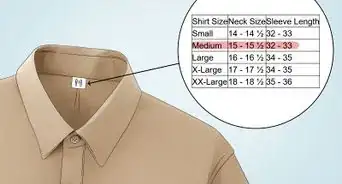

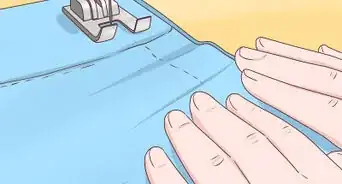
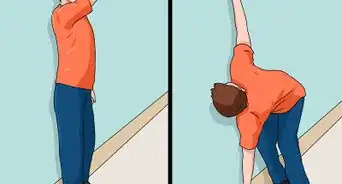
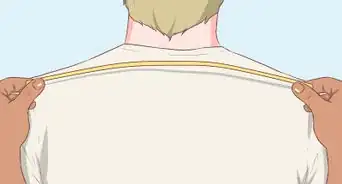
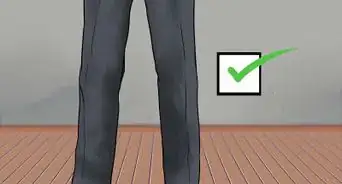

-Step-24-Version-5.webp)

